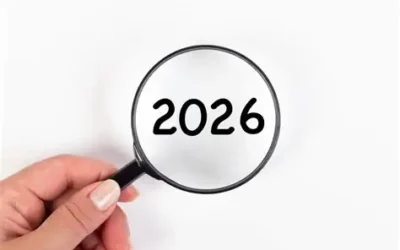
Today’s article delves into a topic of high interest for many citizens of The Netherlands, public transport issues and predictions. For many families and couples with single-income households, the cost of traveling—whether by public transport or car—has become prohibitively expensive. According to recent research by Nibud, commissioned by the Mobility Alliance (a partnership of public transport organizations), this financial burden is forcing households to make difficult choices regarding their mobility. The study highlights that it’s not just the poorest households that are affected, but also middle-income families, many of whom are hundreds of euros short of covering travel costs without cutting back on other essential expenses.
Rising Travel Costs and Their Impact
Between 2015 and 2023, travel costs surged by nearly 30%, slightly outpacing the inflation rate of 26%. These rising costs can be attributed to factors such as increased fuel prices and higher public transport fares. Further research reveals that the difference in expenses between using public transport or a car is not as significant as one might expect. While public transport is generally cheaper, cars can accommodate more passengers, balancing the overall costs.
City dwellers tend to spend less on transportation compared to those living in rural areas. Urban residents have better access to public transportation and can often opt for biking, whereas in less densely populated areas, such options are more limited, resulting in higher transportation costs.
Social Implications of Limited Mobility
The Mobility Alliance warns that this lack of affordable travel is more than just a personal financial issue—it also affects the broader social fabric. According to the organization’s chairman, affordable mobility is essential for participation in everyday life, whether it’s commuting to work, attending job interviews, visiting family, or participating in community activities. The inability to travel easily can lead to isolation and reduce societal cohesion.
Addressing the Problem: Solutions Proposed by the Mobility Alliance
To mitigate the financial strain, the Mobility Alliance suggests that more employers should offer travel allowances, which can be a fiscally attractive option for both the company and the employee. These allowances don’t need to be limited to car or public transport usage but could also cover bicycles and scooters. Moreover, the organization advocates greater transparency regarding travel costs, as this information is not readily accessible in all areas.
The Mobility Alliance also emphasizes the importance of reducing travel needs by better integrating living, working, and leisure facilities. By bringing these activities closer together, people will naturally travel less, reducing both costs and environmental impact.
Public Transport vs. Car Travel: A Comparative Analysis
The debate over whether public transport or car travel is more efficient and cost-effective remains ongoing. To explore the advantages and disadvantages of each mode of transportation, a series of case studies were conducted, comparing the costs, duration, CO2 emissions, and air pollution for three specific journeys:
- Regional Trip: Sleen to Coevorden (Drenthe)
In rural areas like Sleen, using a car is still the fastest way to travel. For this 19-kilometer journey, traveling by car is three times quicker than using public transport, which involves multiple transfers and long waiting times. While public transport has environmental advantages with lower CO2 and air pollution emissions, the car offers more comfort, speed, and even cost savings, especially when multiple passengers are involved.
- Urban Trip: Utrecht to Amsterdam
The train ride between Utrecht and Amsterdam is the most popular public transport route in the Netherlands. On this busy route, public transport is often faster, cheaper, and more environmentally friendly than driving, especially considering the likelihood of traffic congestion on city ring roads. However, train delays, cancellations, or overcrowded carriages can reduce the reliability of public transport. On the other hand, driving offers flexibility, especially for those living far from the train stations.
- International Trip: The Hague to Berlin
International travel, such as from The Hague to Berlin, presents a more complex comparison. While car travel may seem more convenient, especially with no direct trains available between these cities, it comes with significantly higher emissions. Train travel, though more environmentally friendly, can be more expensive and time-consuming depending on the booking time and the need for transfers. Price comparison between the two modes depends heavily on when tickets are purchased and how many passengers share the car.
Key Findings from the Comparison
Across all three journeys, a clear conclusion emerges: public transport generates significantly lower CO2 emissions compared to car travel. This is especially true for electric-powered trains and buses running on hydrogen or biofuels. However, cars still dominate when it comes to speed and flexibility, particularly in rural areas.
Despite the environmental advantages of public transport, the cost factor leans in favor of cars, especially for families or groups traveling together. In some cases, group discounts offered by the National Rail Service (NS) do not offset the savings of carpooling.
The Role of Policy in Shaping Transportation Costs
The cost of both car and public transport is also influenced by government policy. For example, fuel excise duties were reduced in 2023, lowering the cost of driving, while train ticket prices were set to increase from January 2024. While the government does not directly control public transport fares, policies such as the VAT imposed on train tickets and the annual fee NS pays for exclusive track access do affect pricing.
As individuals weigh their options between car and public transport, factors such as price, travel duration, comfort, and environmental impact all come into play. Each journey and each decision are shaped by a complex combination of personal preferences and external factors.
The Future of Mobility in the Netherlands
Ultimately, the question of whether to travel by car or public transport depends on what matters most to the individual traveler: affordability, convenience, speed, or environmental responsibility. As the costs of both modes of transportation continue to rise, large groups of Dutch households find themselves making increasingly difficult choices, with significant social and environmental implications. Addressing these challenges will require both policy reforms and innovative solutions, such as improving access to travel allowances, encouraging green transport, and bringing essential services closer to home.
References
Klein , C., & Kersten , H. (2022, November 19). Choosing between public transport and car: a three-trip comparison. Retrieved from NOS News: https://nos.nl/artikel/2453000-kiezen-tussen-openbaar-vervoer-en-auto-een-vergelijking-in-drie-ritten
NOS News. (2024, October 01). Travelling by public transport or car too expensive for many households. Retrieved from NOS News: https://nos.nl/artikel/2539188-reizen-met-ov-of-auto-te-duur-voor-veel-huishoudens
Photo:
https://www.publicdomainpictures.net/pictures/100000/velka/dutch-intercity-train.jpg


